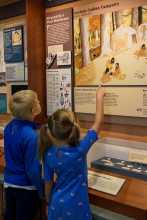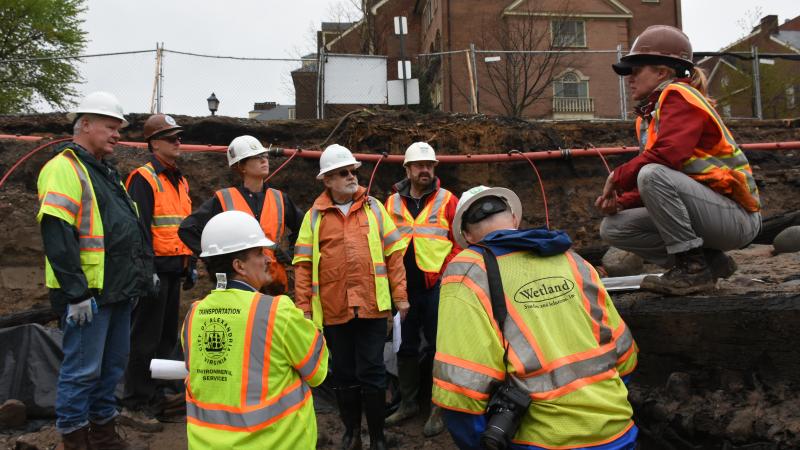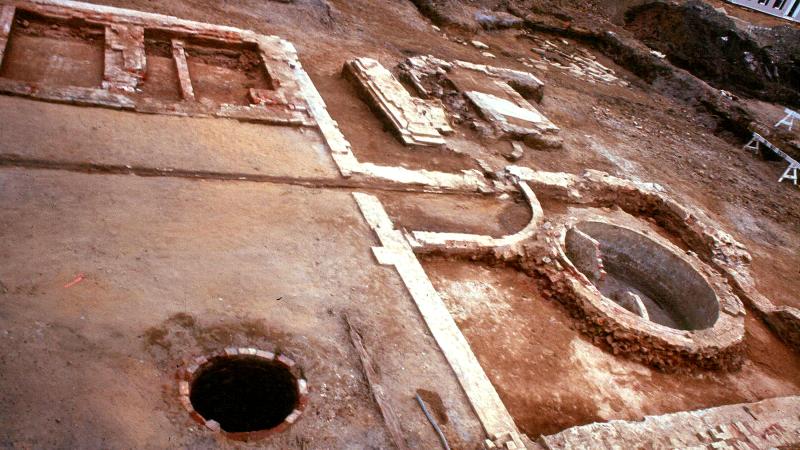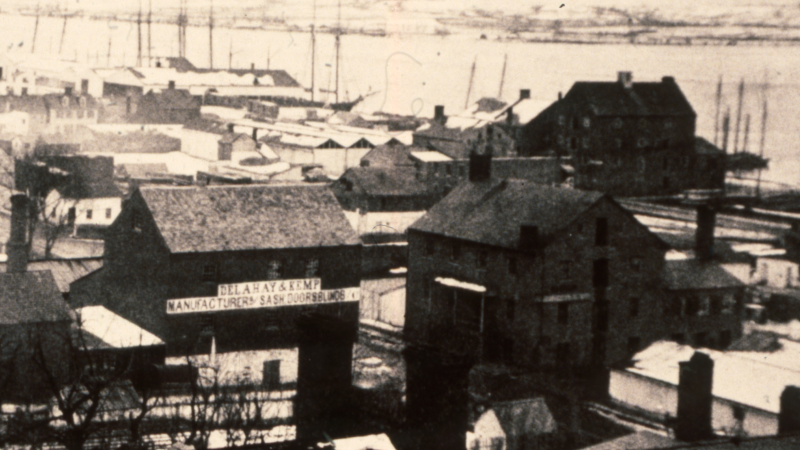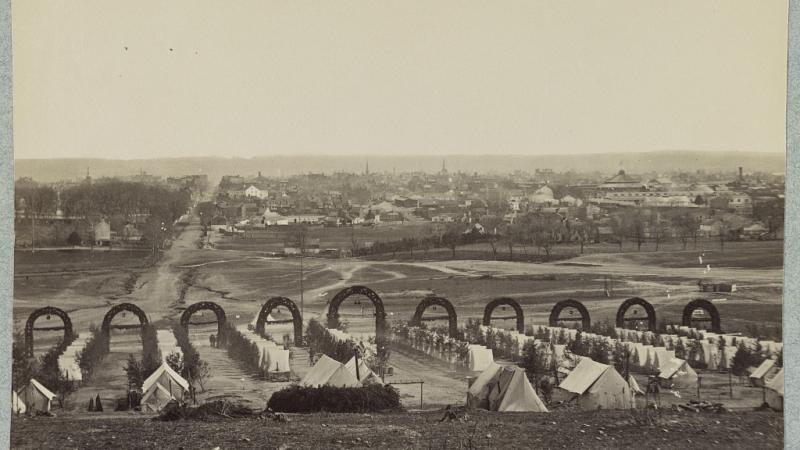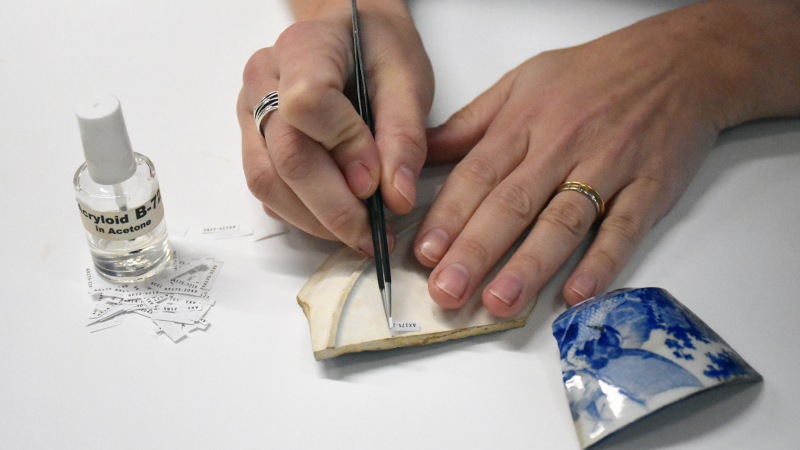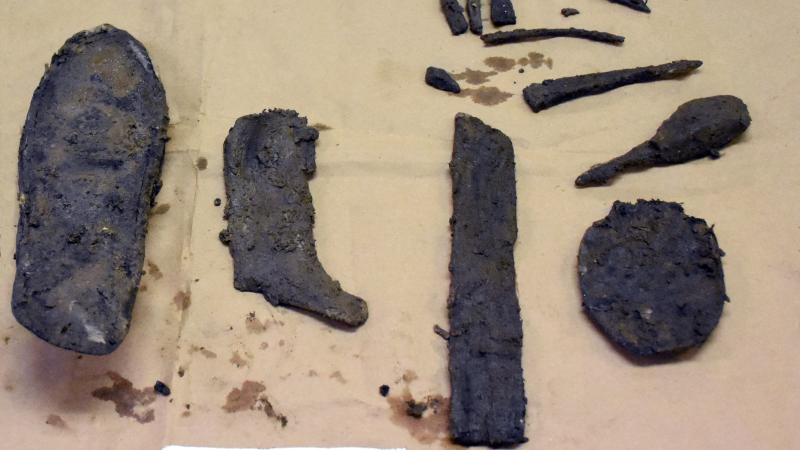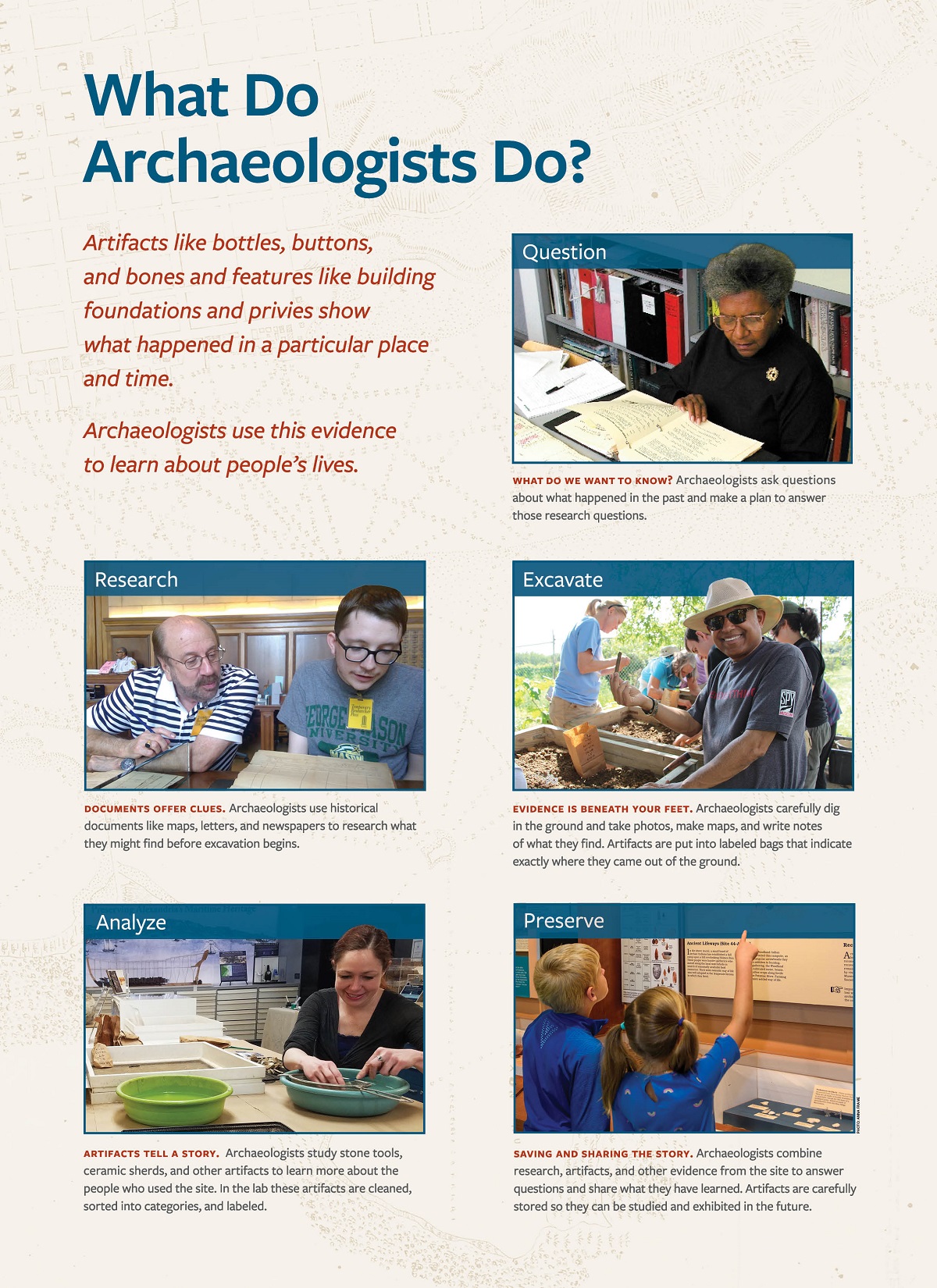
The Lee Street Site: What Do Archaeologists Do
A Community Digs its Past: The Lee Street Site
The updated exhibit includes artifacts and panels that reveal the archaeological process and the history of Alexandria as seen through the lens of the Lee Street Site (archaeological site 44AX180) and several other waterfront sites.
Preserved on the Lee Street Site was a cross-section of Alexandria's history from its founding in 1749 into the 20th century. Eighteenth-century wharves remained intact below remnants of a bakery, taverns, and residences that had sprung up on the bustling waterfront. The block was later used by the Union Army as a hospital support facility for the huge influx of soldiers during the Civil War. These layers of time were preserved under shallow foundations and a paved parking lot. The exhibit weaves together the story of the wharves, taverns, bakery and Civil War privy excavated at the corner of Lee and Queen Streets with the step-by-step process of archaeology from research and excavation to lab work and conservation.
Updates to the panels, funded in part by the Historic Alexandria Foundation, make the exhibit more accessible and tell a more inclusive history of our port city.
Read A Community Digs its Past: The Lee Street Site, an 18-page booklet accompanying the original exhibition.
What Do Archaeologists Do?

What Do Archaeologists Do?
Artifacts like bottles, buttons, and bones and features like building foundations and privies show what happened in a particular place and time. Archaeologists use this evidence to learn about people’s lives.
Question: What do we want to know?
Archaeologists ask questions about what happened in the past and make a plan to answer those questions.

Research: Documents offer clues.
Archaeologists use historical documents like maps, letters, and newspapers to research what they might find before excavation begins.

Excavate: Evidence is beneath your feet.
Archaeologists carefully dig in the ground and take photos, make maps, and write notes of what they find. Artifacts are put into labeled bags that show exactly where they came out of the ground.
Analyze: Artifacts tell a story.
Archaeologists study stone tools, ceramic sherds, and other artifacts to learn more about the people who used the site. In the lab these artifacts are cleaned, sorted into categories, and labeled.
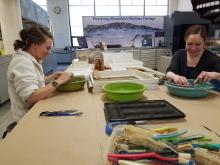
Preserve: Saving and sharing the story.
Archaeologists combine research, artifacts, and other evidence from the site to answer questions and share what they have learned. Artifacts and other information are carefully stored so that they can be studied and exhibited in the future.
